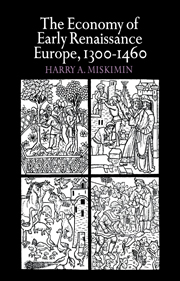3 - TOWN AND INDUSTRY
Published online by Cambridge University Press: 29 January 2010
Summary
POPULATION
Reduced to its basic elements, a town is nothing more than a mass of people dwelling within narrow geographical confines. Despite its apparent simplicity, this definition stresses the essential features of urban life and reveals the roots of many urban economic, social, and political problems and policies. How may the people be fed, housed, and ordered when the area is small and the people are many? Can they be taxed by the government, or do their numbers render the townspeople politically dangerous? Should the city government control the surrounding countryside in order to protect the town's supplies of food and raw material? Should it regulate immigration, the organization of industry, and the labor force? To what extent does the very size of the town compel the urban government to intrude in the personal lives and economic affairs of the citizens? Before attempting to discuss these and similar questions, it is necessary to have a firm impression, at least in outline, of the demographic history of Europe's urban centers.
Medieval towns were on the whole quite small; a few, mainly in Italy, such as Milan, Naples, Venice, and Florence, attained population levels of about 100,000 prior to the Black Death; some eastern cities, such as Constantinople, may have had double that figure. For a time, Paris was considered to have been one of the largest cities in medieval Europe, but recent research has reduced the estimated population from an unrealistic 240,000 to a more credible level of 80,000. It was a rare city in northern Europe that exceeded 50,000 inhabitants.
- Type
- Chapter
- Information
- The Economy of Early Renaissance Europe, 1300–1460 , pp. 73 - 115Publisher: Cambridge University PressPrint publication year: 1975



